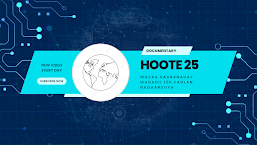# Machine Translation: Bridging Language Barriers in the Digital Age
## Introduction
Machine translation is the process of automatically translating text or speech from one language to another using computer algorithms. In today's globalized world, where communication and information exchange are increasingly important, machine translation plays a crucial role in bridging language barriers and facilitating cross-cultural communication. This article explores the evolution, technology, and impact of machine translation, examining its role in breaking down language barriers and enabling communication across languages.
## The Evolution of Machine Translation
### Early Machine Translation Systems
The concept of machine translation dates back to the 1950s when early systems were developed to translate text from one language to another using simple rules and algorithms. These early systems were limited in their capabilities and often produced inaccurate and nonsensical translations.
### Statistical Machine Translation
In the 1990s, statistical machine translation (SMT) emerged as a new approach to machine translation. SMT uses statistical models to analyze large amounts of bilingual text data and identify patterns and relationships between words and phrases in different languages. This approach significantly improved the quality of machine translations and paved the way for more advanced machine translation systems.
### Neural Machine Translation
In recent years, neural machine translation (NMT) has emerged as the state-of-the-art approach to machine translation. NMT uses artificial neural networks to analyze and translate text, allowing for more accurate and natural-sounding translations. NMT has revolutionized machine translation, enabling more accurate and fluent translations across a wide range of languages.
## The Technology Behind Machine Translation
### Artificial Neural Networks
Artificial neural networks are a key technology used by machine translation systems to analyze and translate text. These networks are inspired by the structure and function of the human brain and are capable of learning from large amounts of data to make accurate and natural-sounding translations.
### Deep Learning
Deep learning is a subset of machine learning that uses artificial neural networks to analyze and learn from large amounts of data. Deep learning algorithms can automatically discover patterns and relationships in data, which can be used to make more accurate and natural-sounding translations.
### Natural Language Processing (NLP)
Natural language processing (NLP) is another technology used by machine translation systems to analyze and understand text. NLP algorithms can extract valuable insights from unstructured text data, which can be used to improve the quality of translations.
### Big Data
Big data technologies, such as Hadoop and Spark, enable machine translation systems to process and analyze vast amounts of data quickly and efficiently. By analyzing large data sets, machine translation systems can identify patterns and trends that can be used to improve the quality of translations.
## The Impact of Machine Translation
### Breaking Down Language Barriers
One of the primary benefits of machine translation is its ability to break down language barriers and enable communication across languages. Machine translation allows people who speak different languages to communicate with each other, share information, and collaborate on projects.
### Facilitating Cross-Cultural Communication
Machine translation also facilitates cross-cultural communication by enabling people from different cultures to understand and appreciate each other's languages and perspectives. This can lead to greater understanding, cooperation, and collaboration between individuals and groups from different cultures.
### Enabling Access to Information
Machine translation enables people who speak different languages to access and understand information that is written in other languages. This can be particularly important for accessing educational, scientific, and technical information that may not be available in one's native language.
### Supporting Global Business
Machine translation is also important for global business, enabling companies to communicate with customers, partners, and employees who speak different languages. This can help companies expand their reach and enter new markets, leading to increased sales and revenue.
## The Challenges of Machine Translation
### Accuracy
One of the challenges of machine translation is accuracy. Machine translation systems can sometimes produce inaccurate or nonsensical translations, particularly for languages that are structurally different from the source language.
### Fluency
Another challenge of machine translation is fluency. Machine translation systems can sometimes produce translations that are grammatically correct but lack the natural flow and style of human-written text.
### Cultural Sensitivity
Machine translation systems can also struggle with cultural sensitivity, producing translations that may be inappropriate or offensive in certain cultural contexts.
## Conclusion
Machine translation is a powerful technology that has the potential to break down language barriers and enable communication across languages. By leveraging advanced technologies, such as artificial neural networks and deep learning, machine translation systems can produce accurate and natural-sounding translations that facilitate cross-cultural communication, enable access to information, and support global business. However, machine translation also presents challenges, such as accuracy, fluency, and cultural sensitivity, that must be addressed to realize its full potential.


.jpeg)

.jpg)

0 Comments